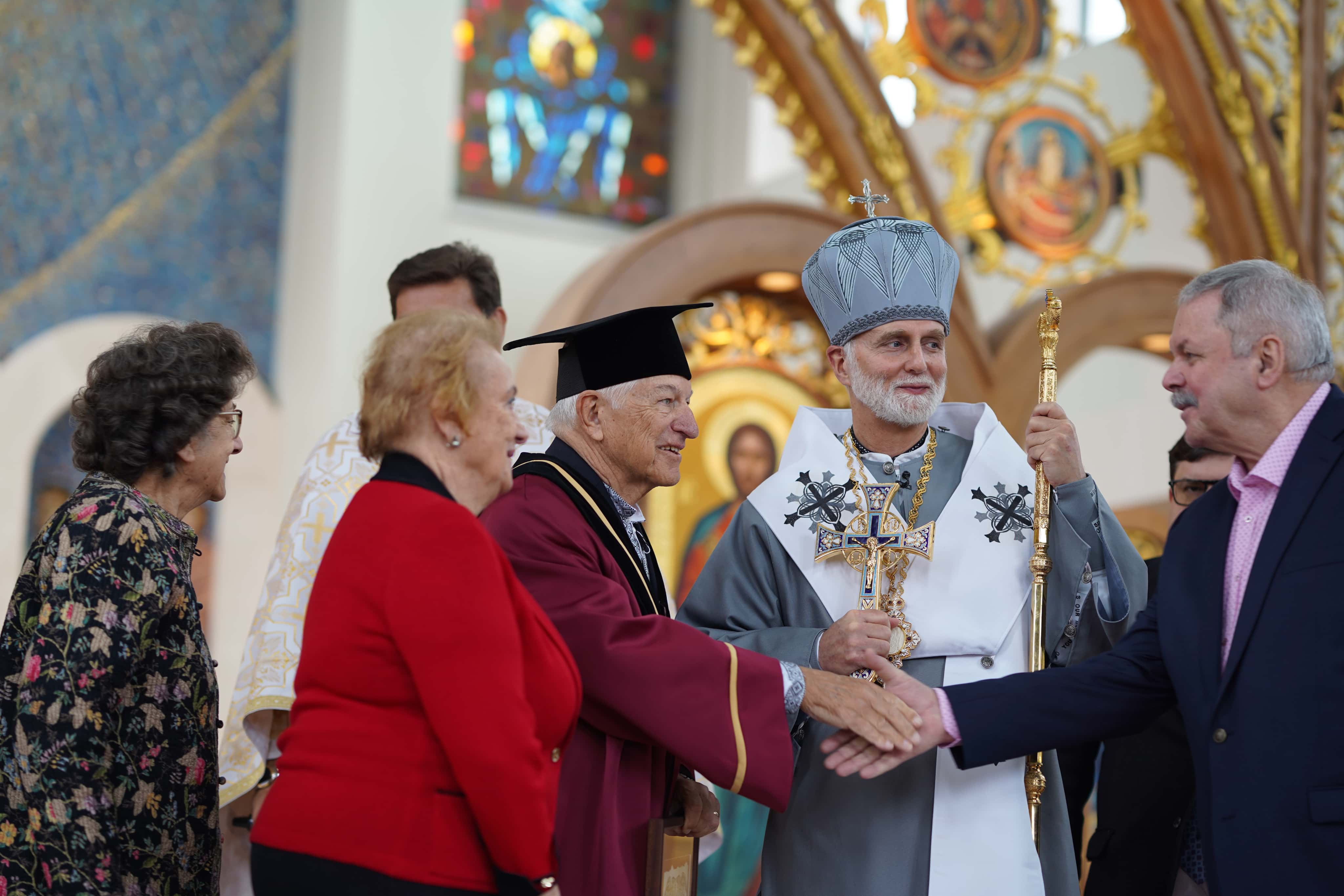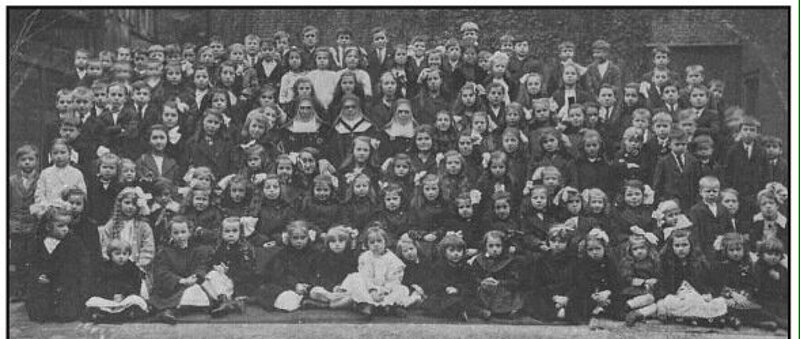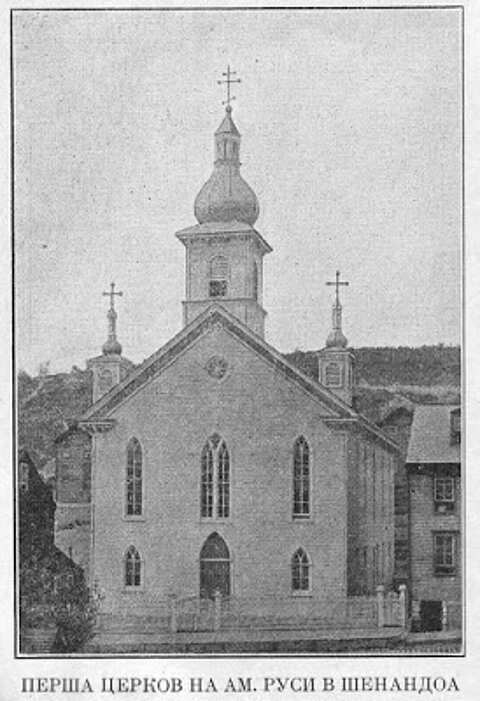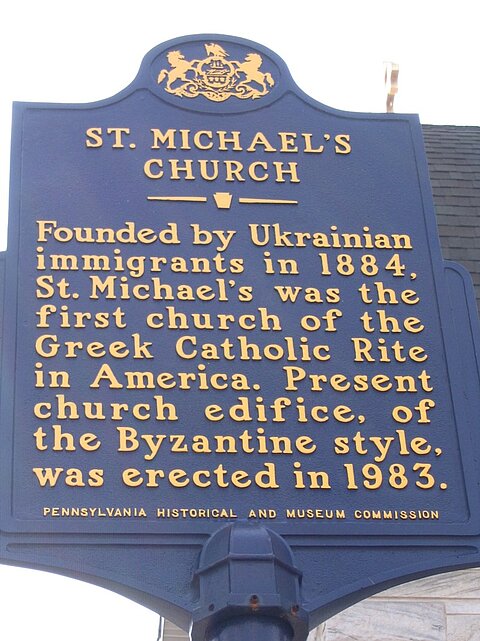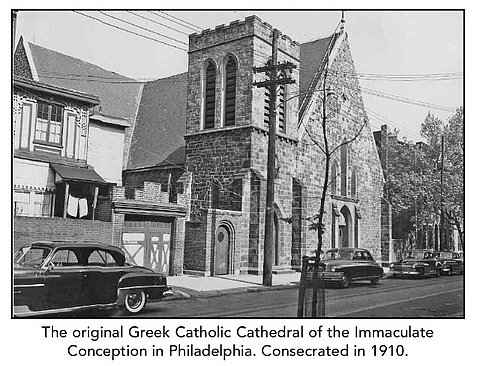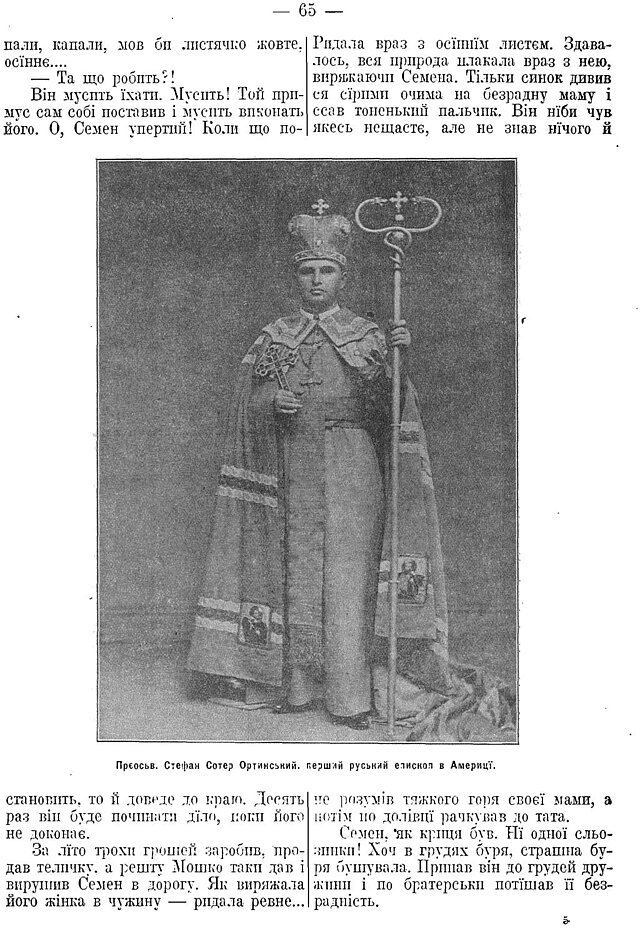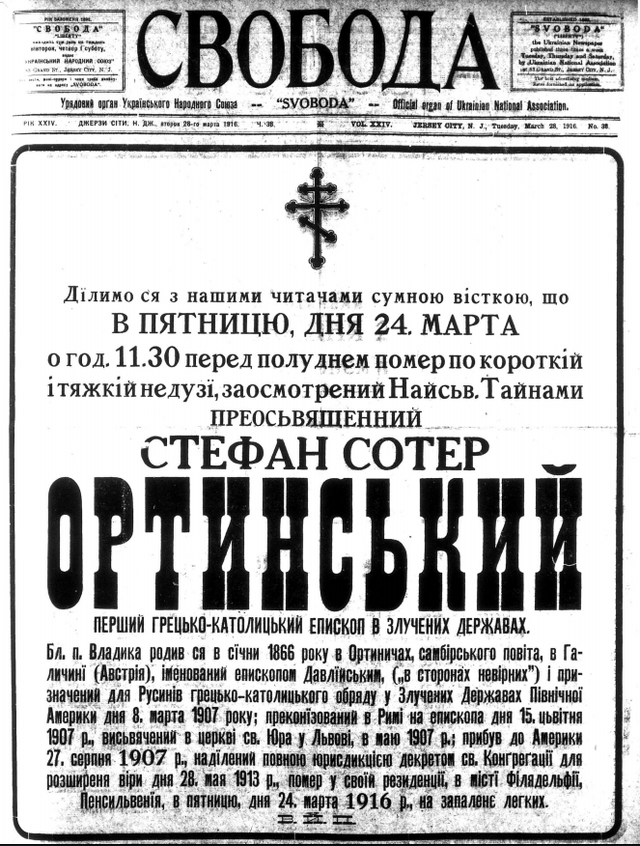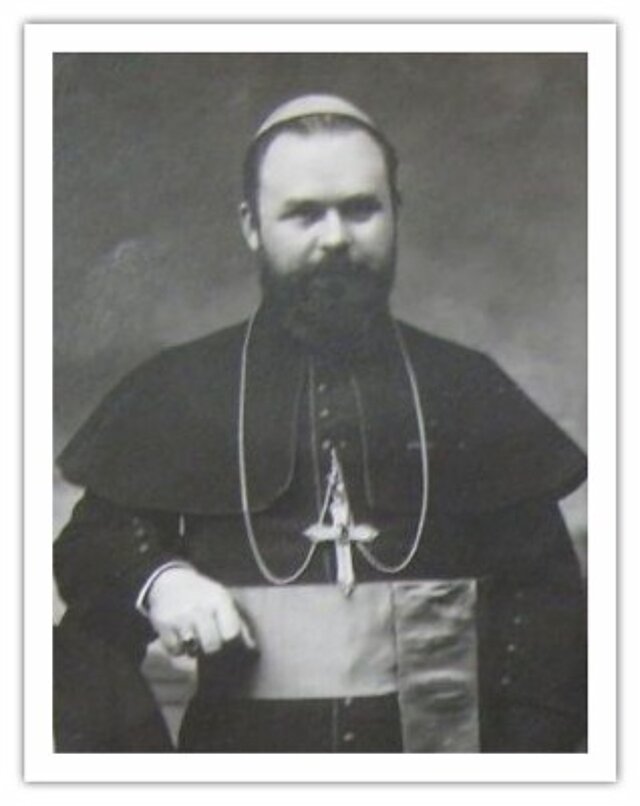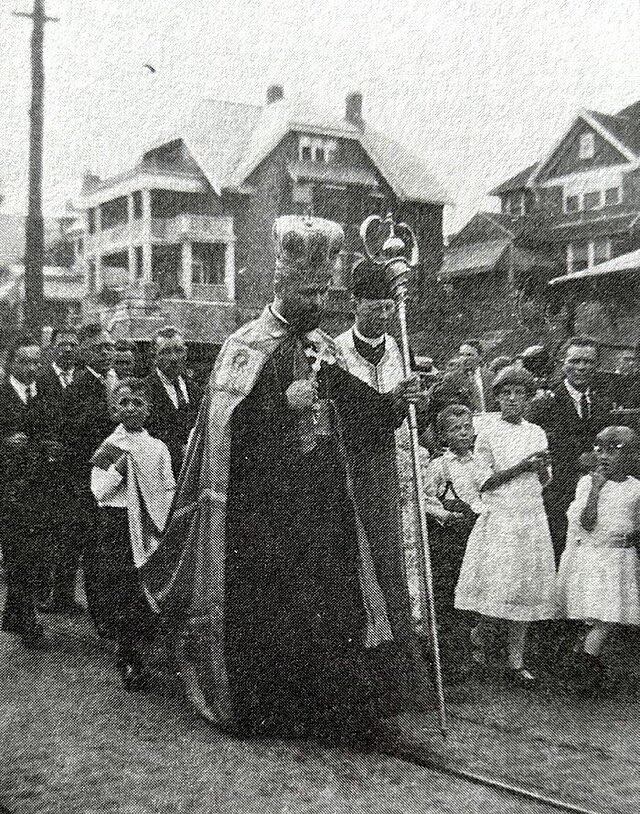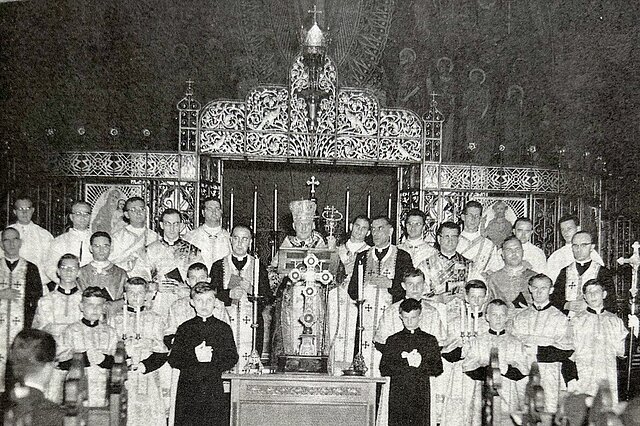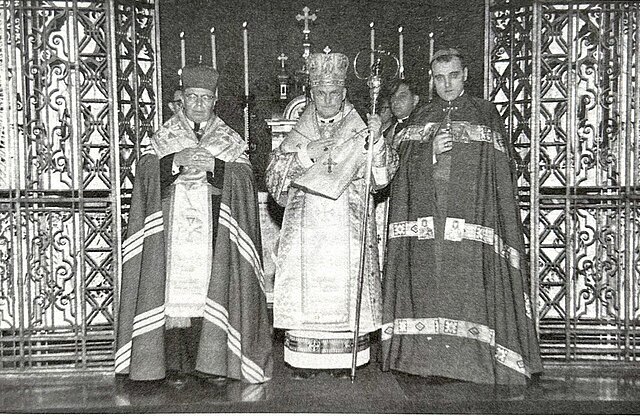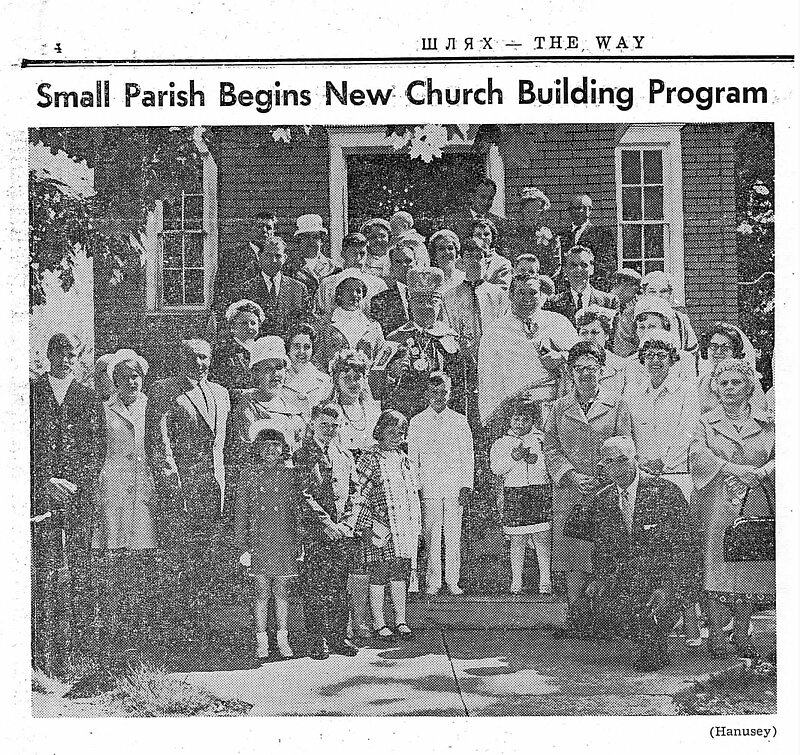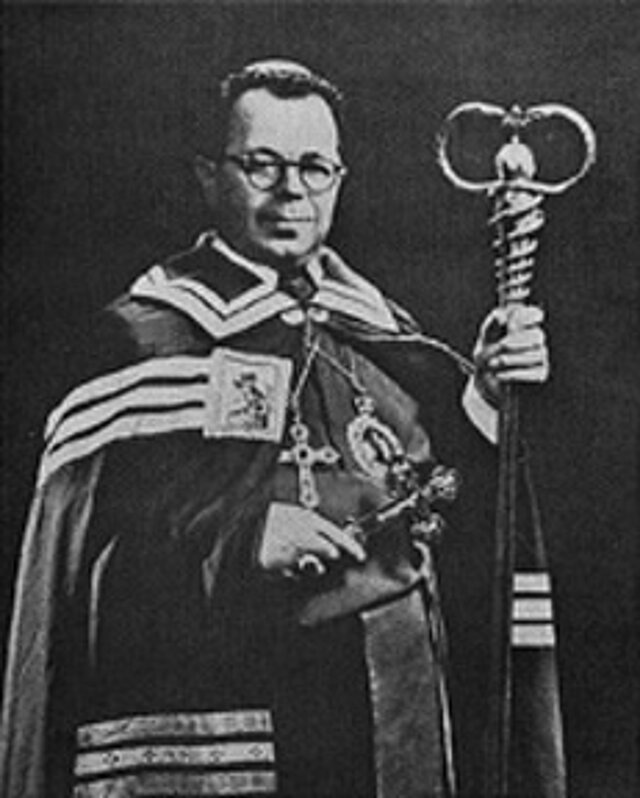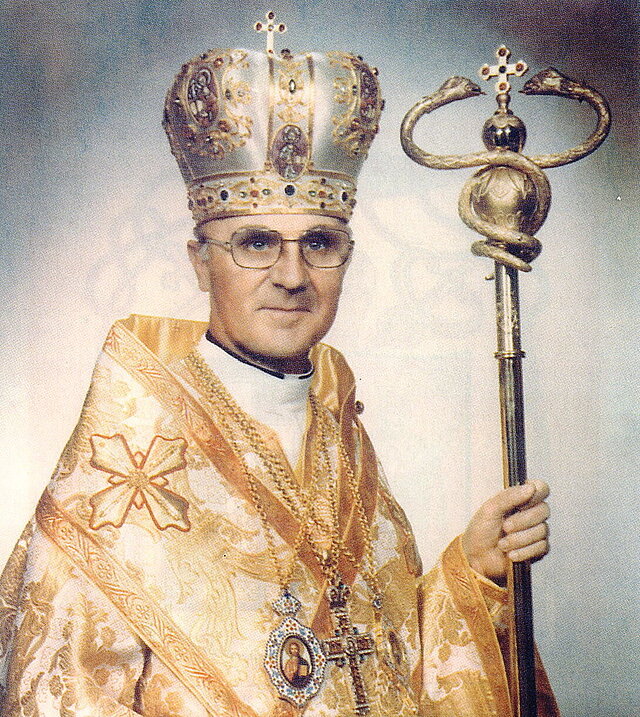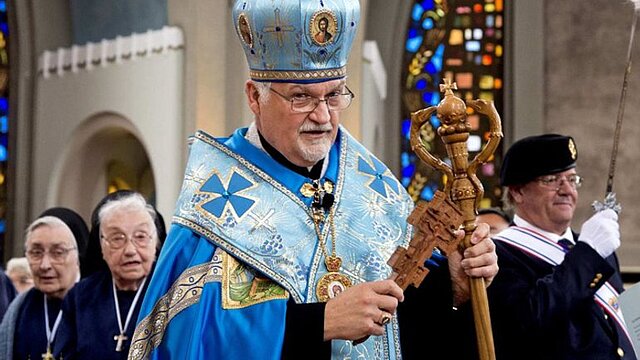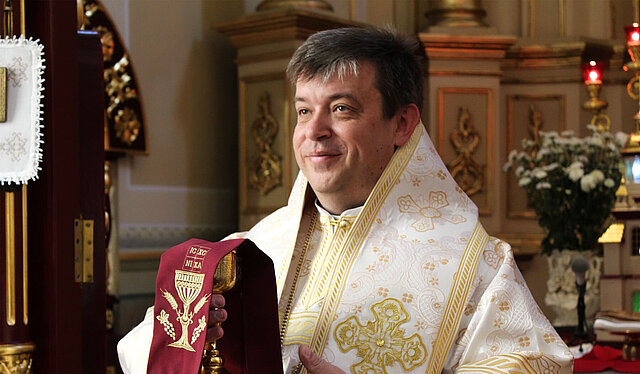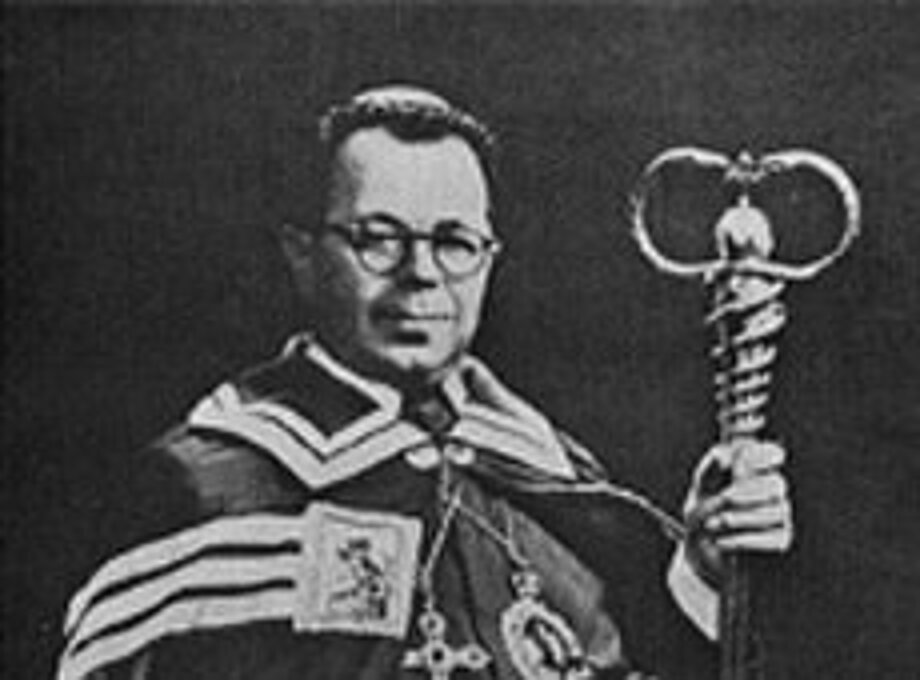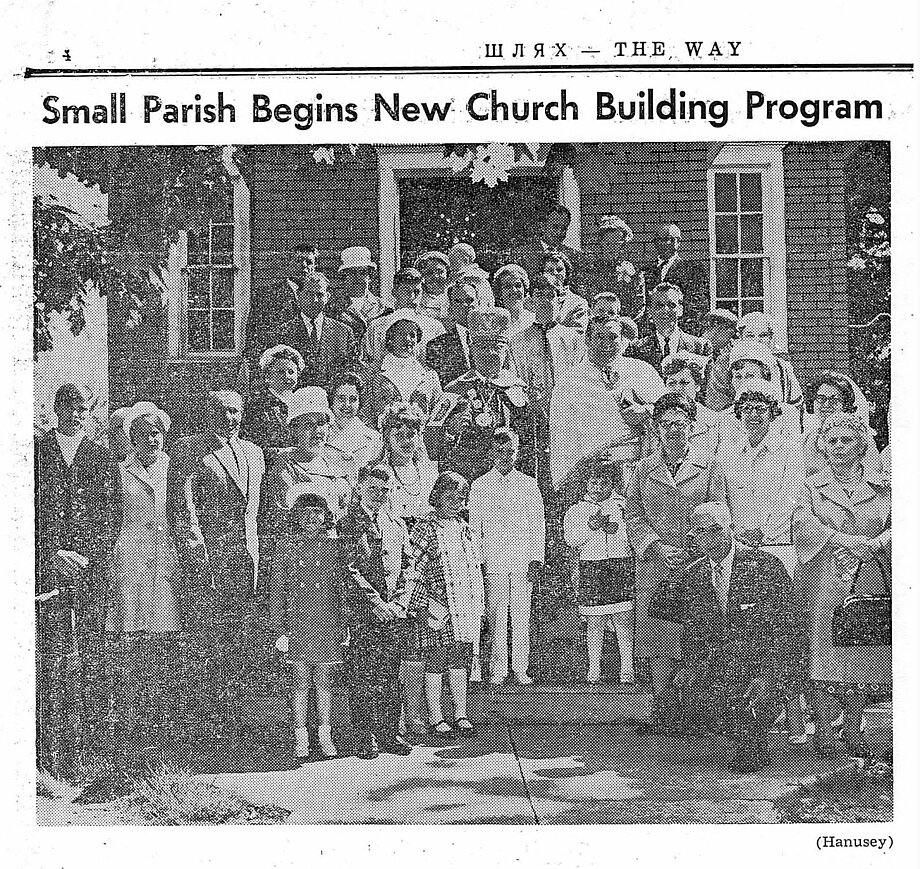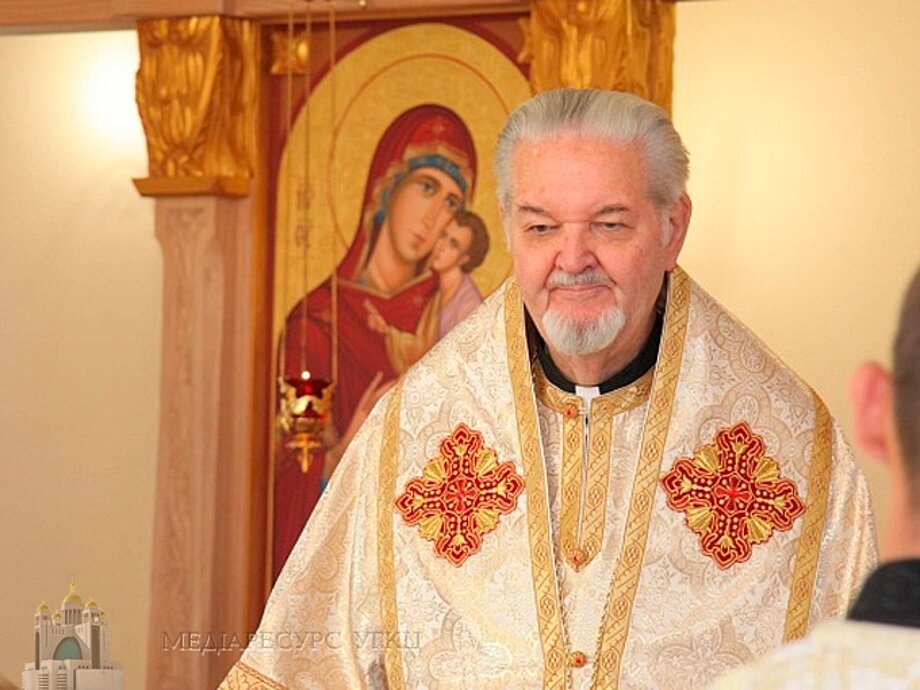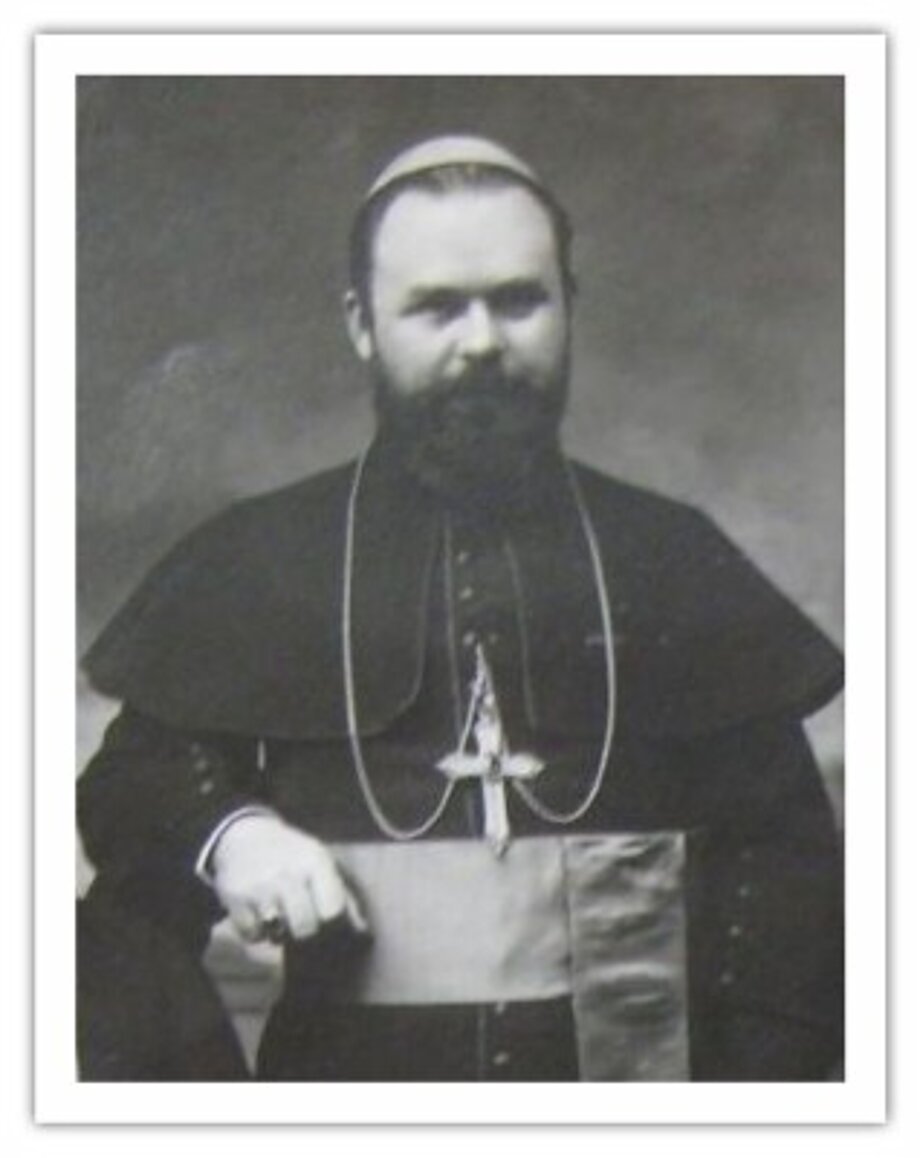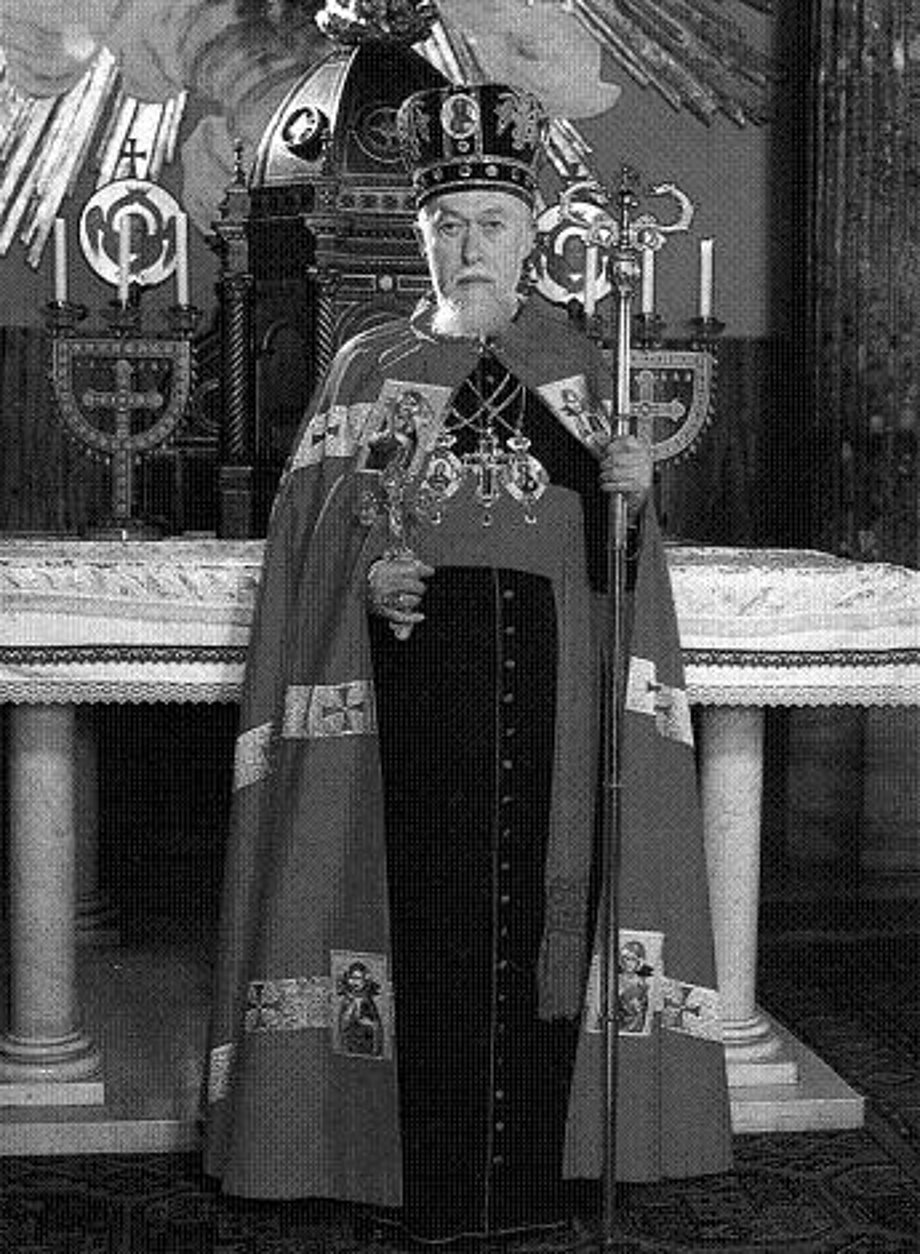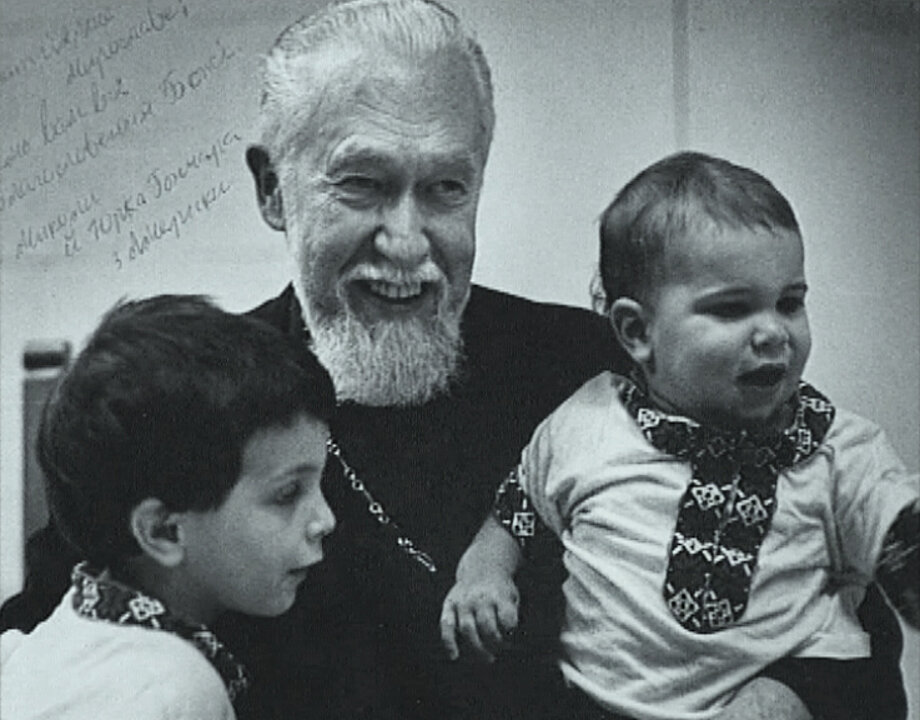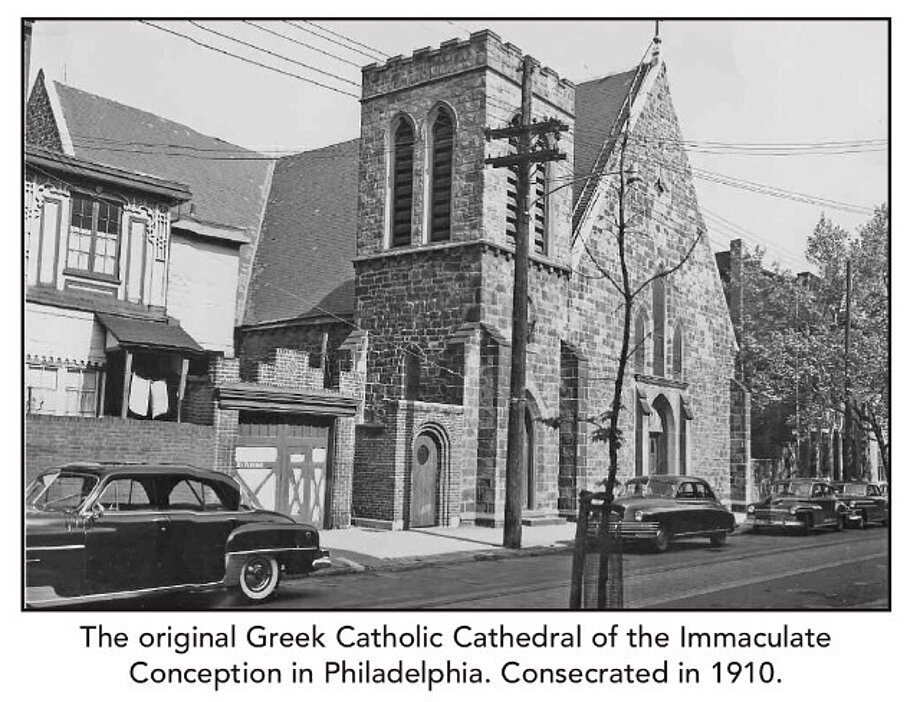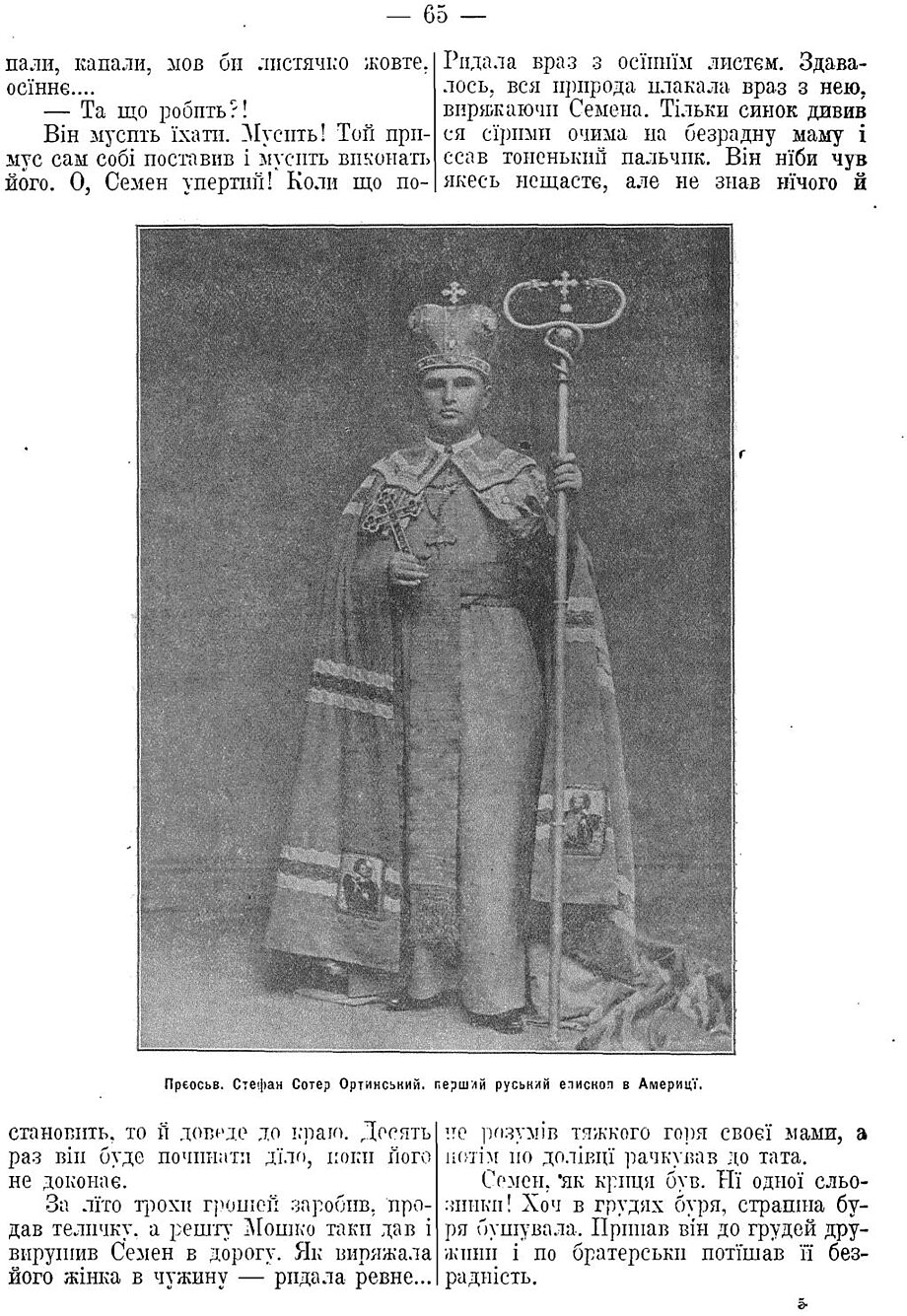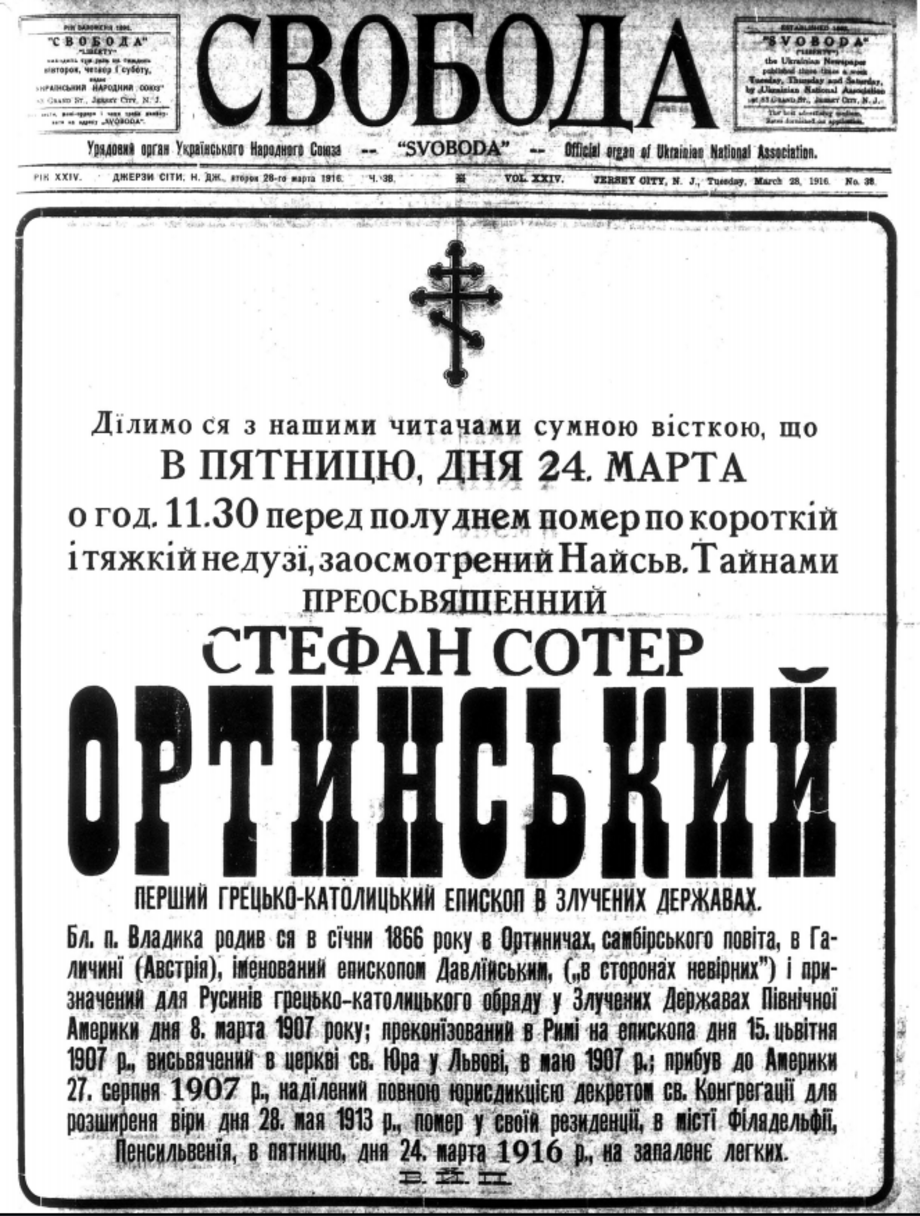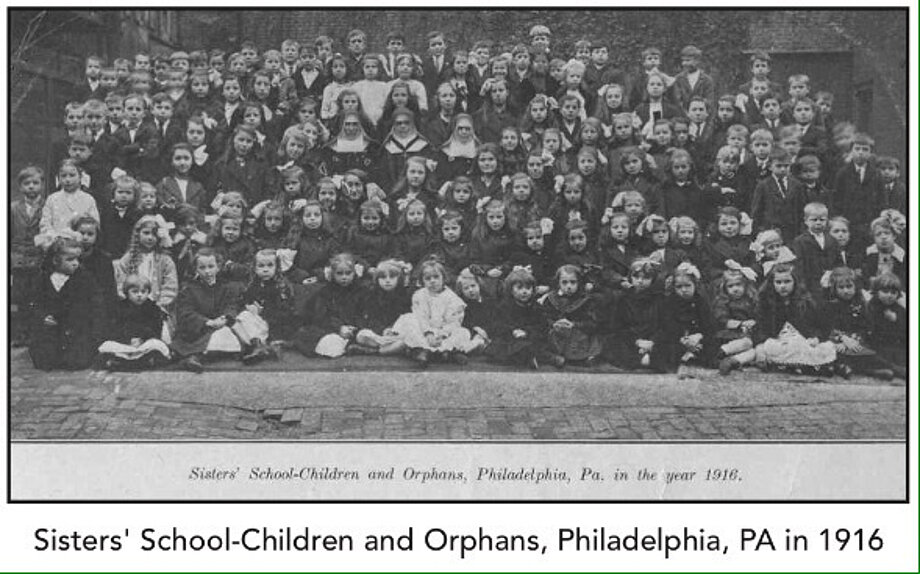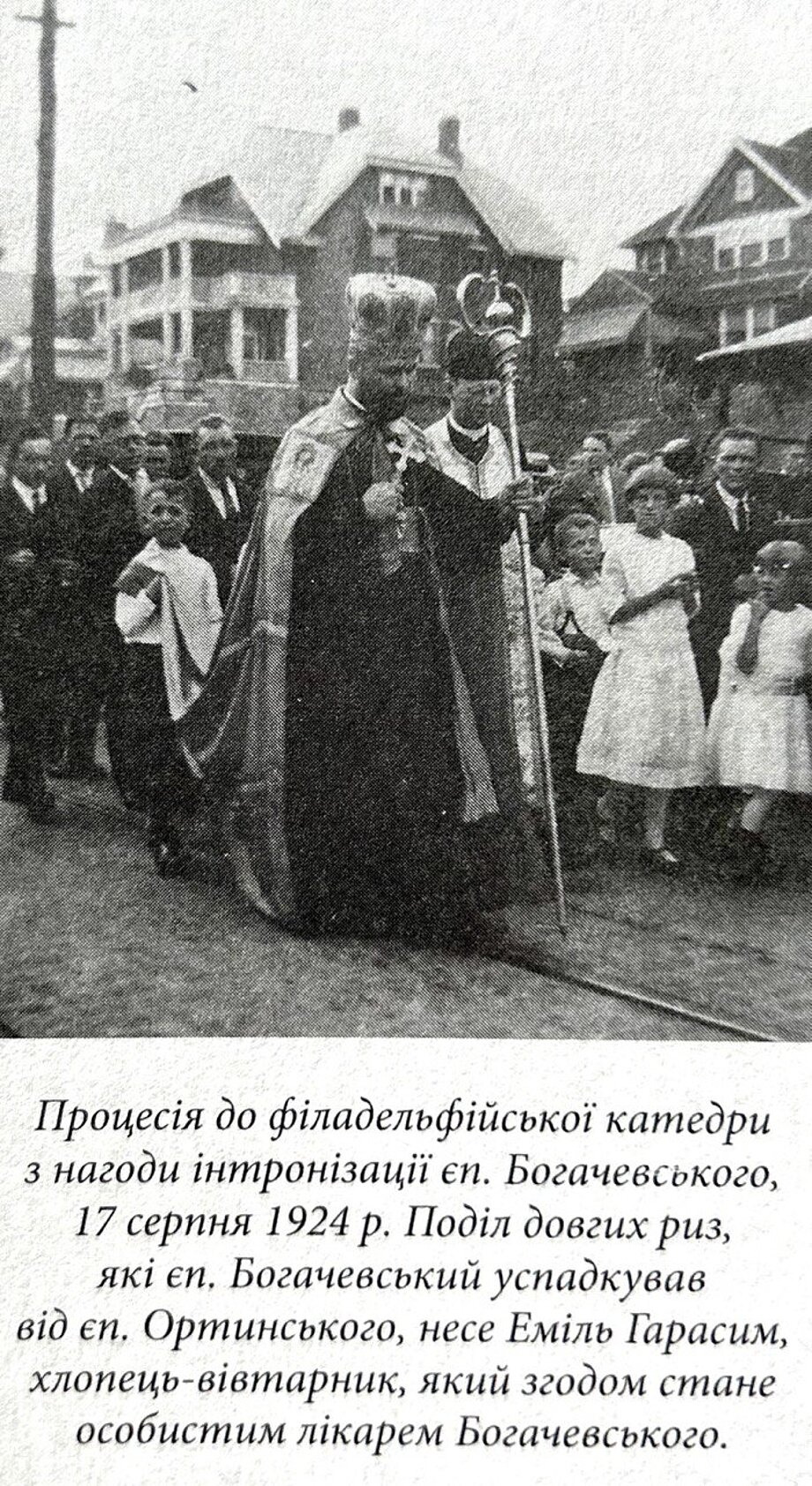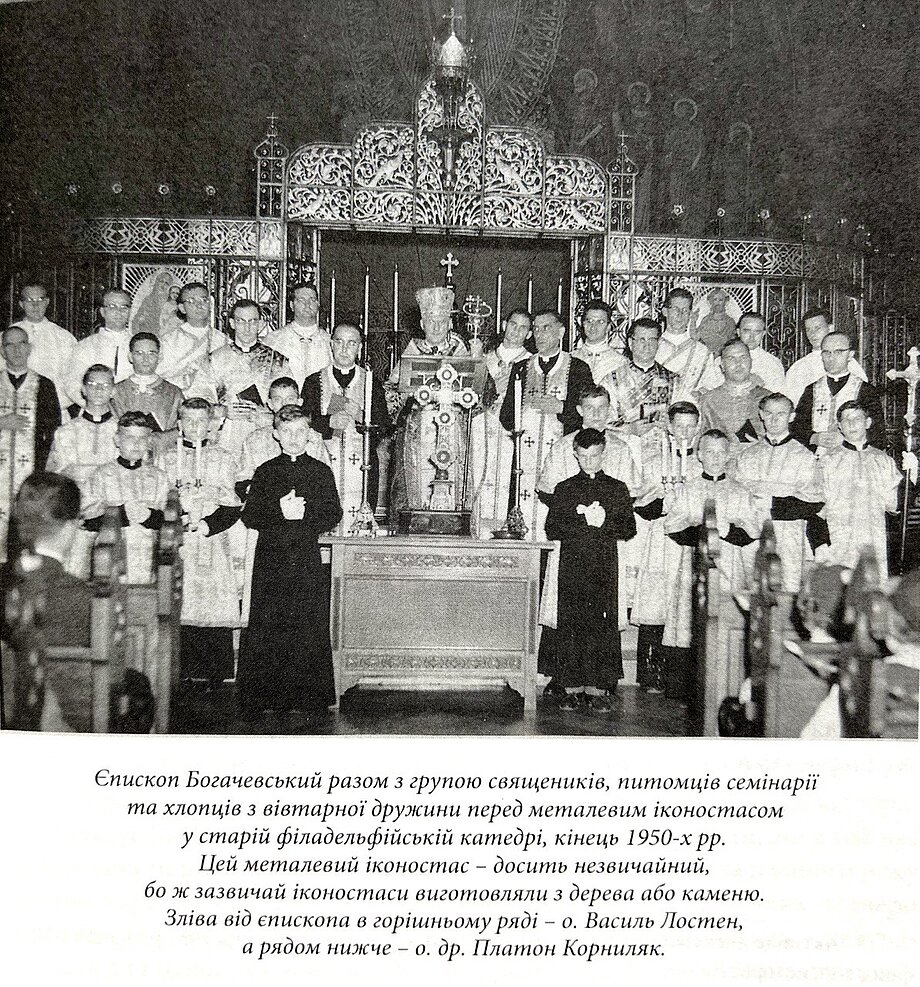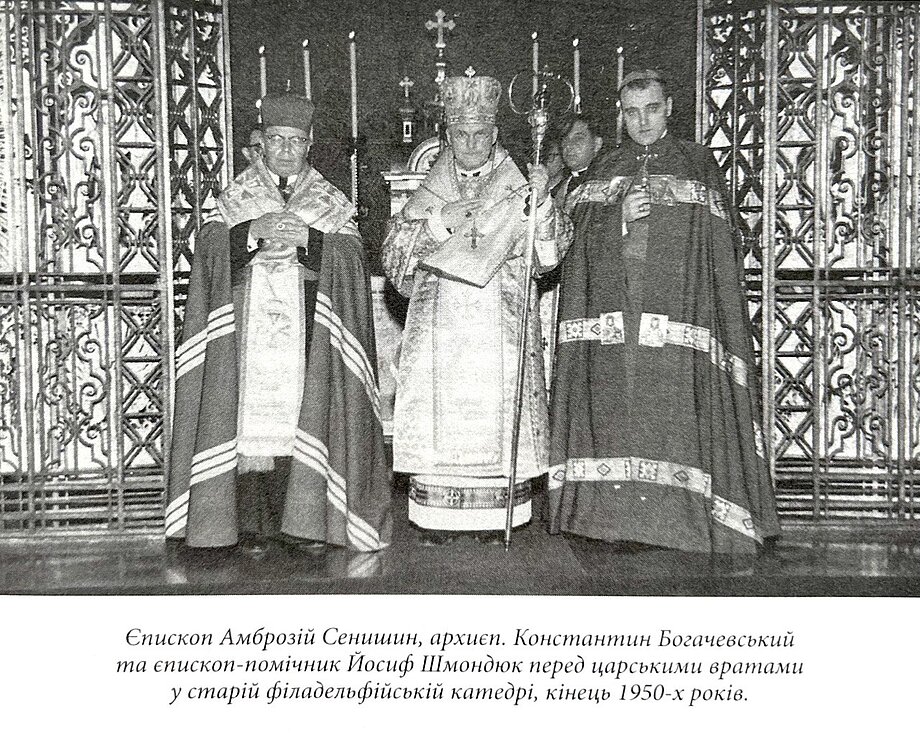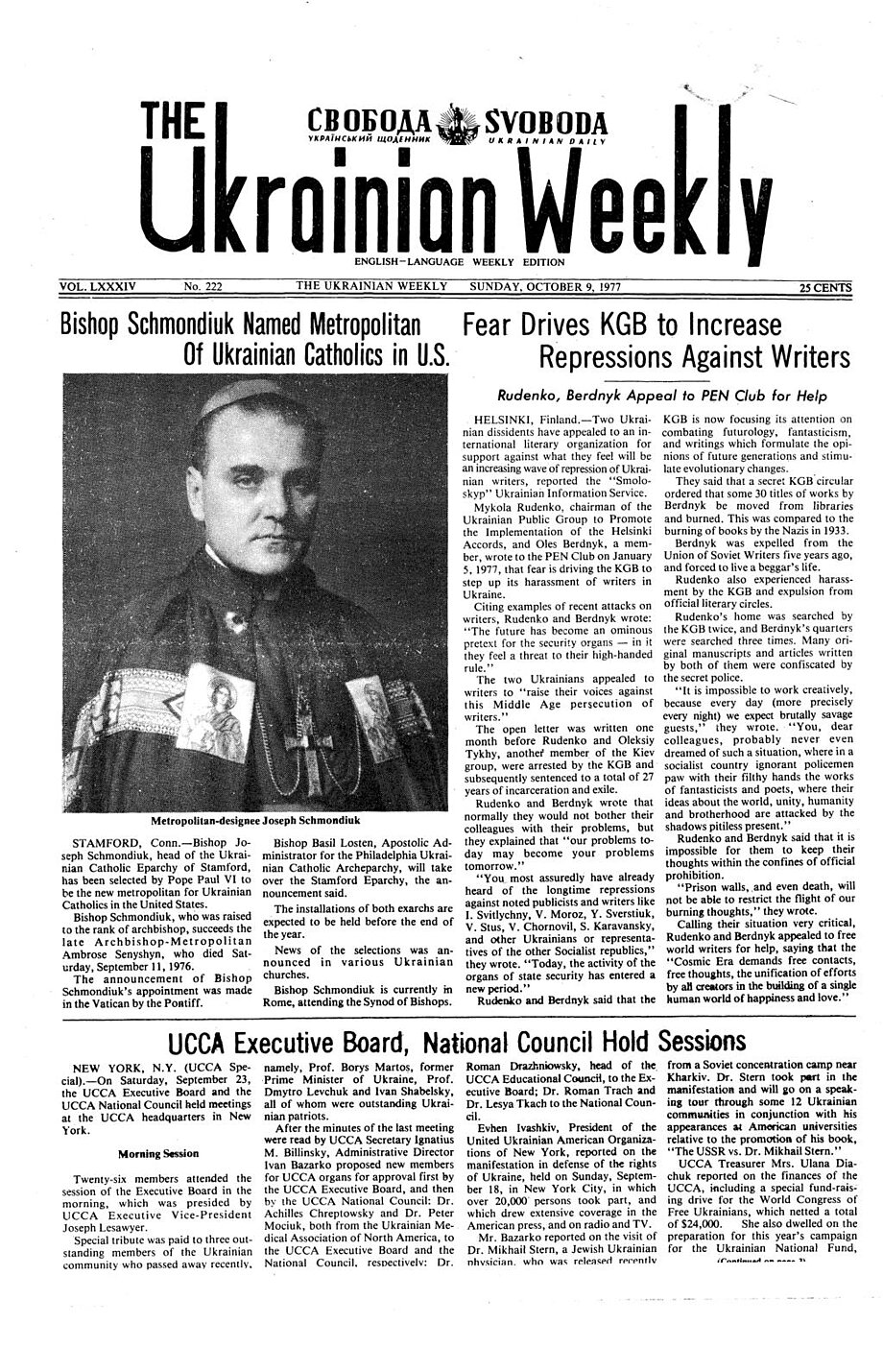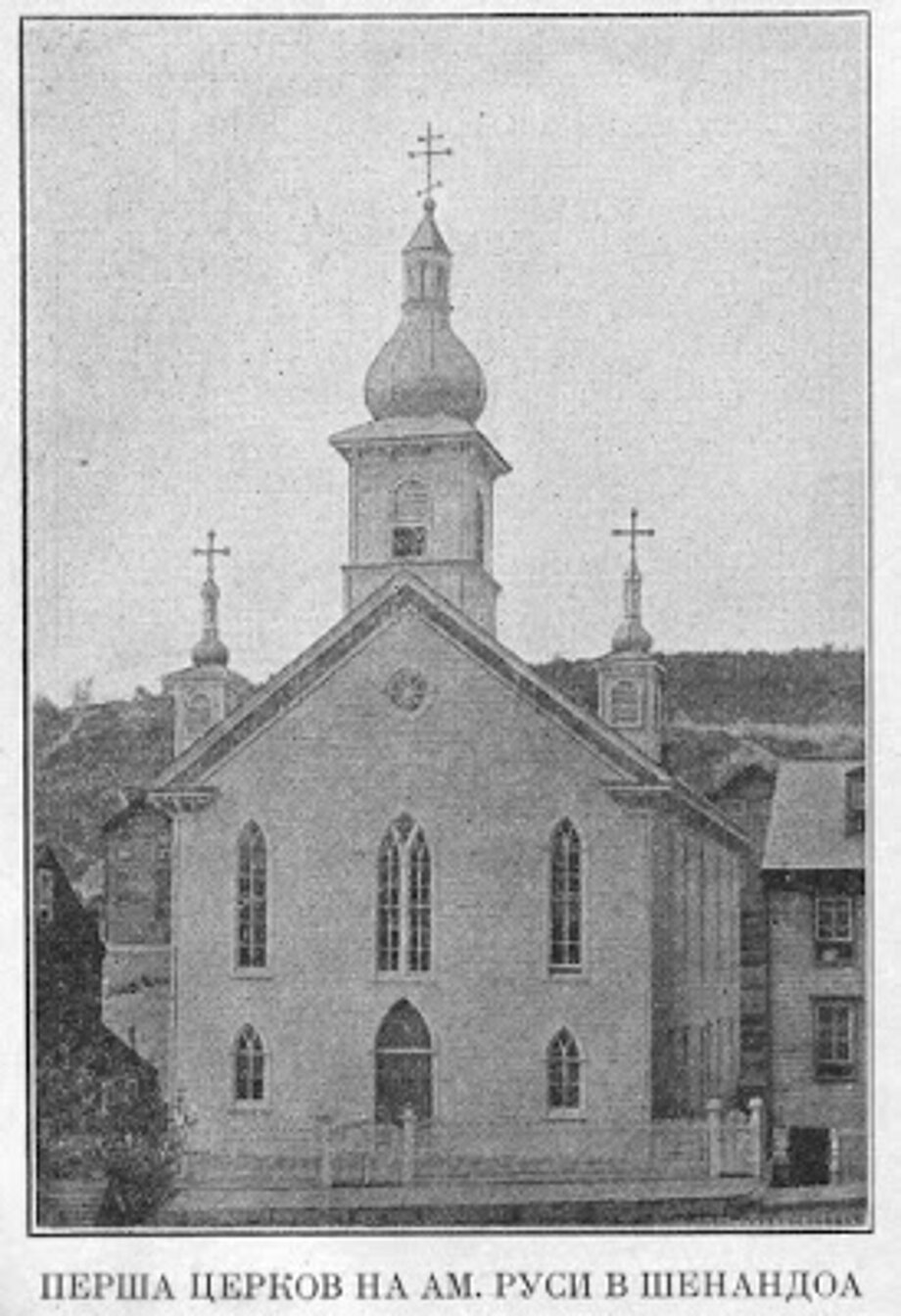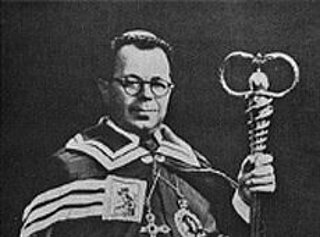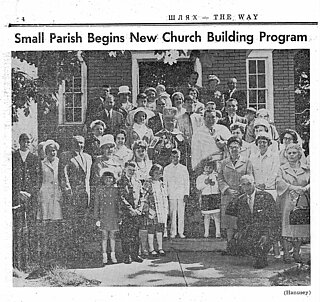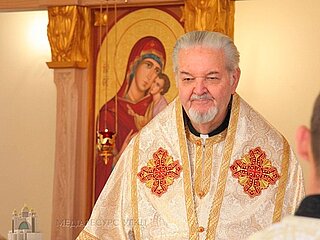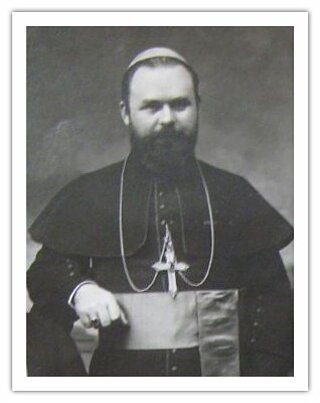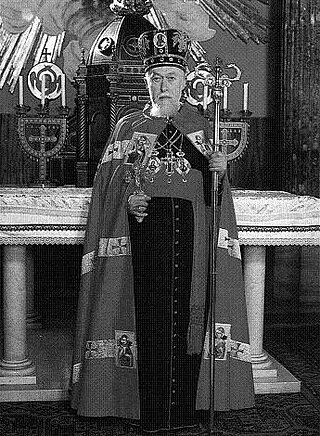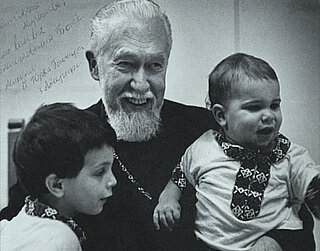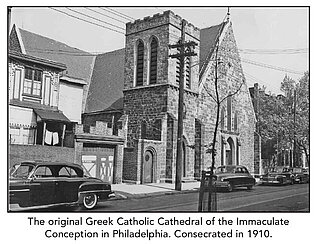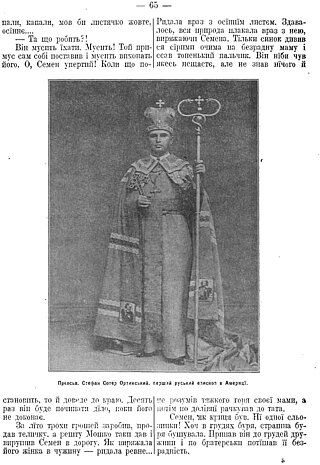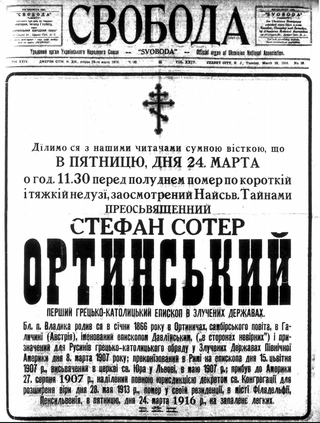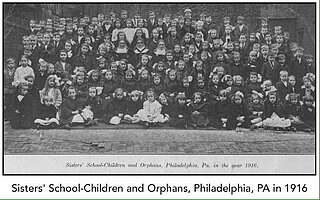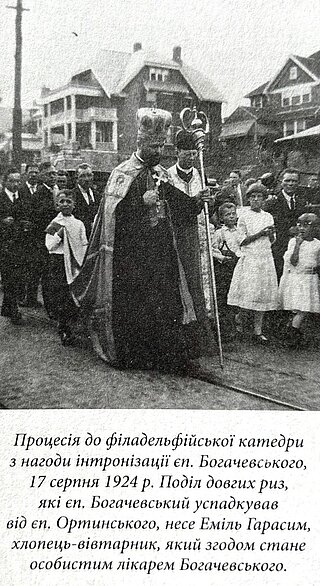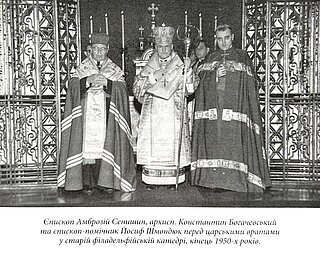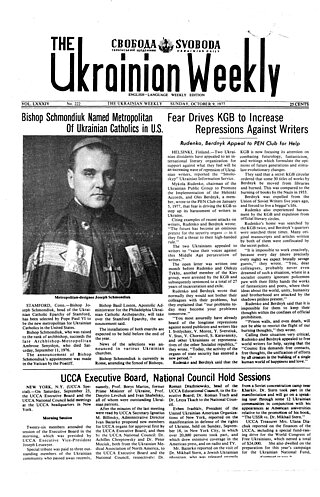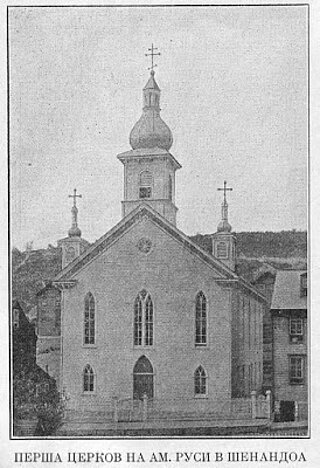- Christmas Appeal 2025
- Archeparchy
- Our faith
- Offices and ministries
- News
- Events
- Parishes
- Youth Protection
History of the Archeparchy of Philadelphia
History of the Archeparchy of Philadelphia
is the result of the development of the Ukrainian Greek Catholic community
in the settlements from small migrant parishes to the formation of
a Metropolitan Province with one Archeparchy and three Eparchies.
1870s - the beginning of the migration of Ukrainian Ruthenians to the United States
1884 - appointment of the first Greek Catholic priest Ivan Wolansky
1907 - appointment of the first Greek Catholic bishop Stephen Soter Ortynsky
1910 - consecration of the Cathedral of the Immaculate Conception in Philadelphia
1913 - establishment of the Greek Catholic Exarchate under the care of the Apostolic Legate in Washington, DC
1916 - appointment of two priests for Galician and Transcarpathian Greek Catholics
1924 - appointment of Bishop Constantine Bohachevsky for Galicians and Bishop Vasyl Takach for Transcarpathians
1956 - formation of the Stamford Exarchate
1958 - foundation of the Metropolia of Philadelphia
1961 - formation of the Eparchy of St. Nicholas in Chicago
1966 - the cornerstone for the new Cathedral of the Immaculate Conception in Philadelphia is laid
1983 - formation of the Eparchy of St. Josaphat in Parma
The first parish
The late 1870s witnessed the first major wave of migration to the United States of America of Ruthenians, the name given to Catholics of the Byzantine Tradition in the Austro-Hungarian Empire at that time. In 1884, Metropolitan Sylvester Sembratovych sent the first Greek Catholic priest to the United States, namely Rev. Ivan Wolansky, who gathered the Greek Catholic community in 1884 for worship in Kern Hall in Shenandoah, Pennsylvania. In 1885, Father Wolansky and his faithful began building the first Ruthenian Catholic parish church in Shenandoah, which was dedicated the following year. Father Wolansky then embarked on his missionary work, organizing parish communities in other towns of Pennsylvania, including Kingston (1887), Hazelton (1887), Olyphant (1888), Shamokin (1890), Mount Carmel (1891), Pittsburgh (1891), McAdoo (1891), Philadelphia (1893), and Ramey (1893). At that time, Greek Catholics were under the jurisdiction of the Latin Ordinariate at their residence, according to the Apostolic Letter of Pope Leo XII “Orientalium Dignitas” (1894), which emphasized the dignity of the Eastern Rite Churches.
Building the structure: Bishop Soter Ortynsky
In 1907, Pope Pius X appointed the first Greek Catholic bishop for the faithful in the United States, Soter Stephen Ortynsky. Still, Bishop Ortynsky could exercise his jurisdiction as a Vicar Bishop of various Latin Rite bishops in the dioceses within which his faithful lived. At that time, the situation between the parishes and the newly arrived bishop was somewhat complicated. For the longest time, the parishes had had no prior episcopal care, and internal misunderstandings had developed between Galicians and Thus, Bishop Soter Ortynsky strived primarily to unite the community and to nurture its further development. At the same time, tensions arose in cooperation with the Latin Rite bishops of America who had difficulty comprehending the essence and identity of the Greek Catholic Church. An example is the papal bull of Pope Pius X, issued on June 14, 1907, titled “Ea Semper”, which prohibited Bishop Soter to invite married priests from Ukraine to serve and limited his rights as a ruling bishop. The following year, after the document was issued, Bishop Soter wrote an open letter in response to the bull, stating: “I did not and do not obey this bull, because it is against the dignity of our Church”.
Despite the difficulties and rejection, Bishop Ortynsky worked tirelessly for the development of his church, built parishes, invited the Basilian Sisters to the United States, opened an orphanage, established
evening schools, and founded the Providence Association of Ukrainian Catholics of America, whose task was to provide financial assistance to parishes. In October 1910, Bishop Soter and Metropolitan Andrey Sheptytskyy held a solemn dedication of the Cathedral of the Immaculate Conception of the Blessed Virgin Mary in Philadelphia.
A significant event took place on May 28, 1913, when the Apostolic See granted Bishop Soter Ortynsky direct jurisdiction and complete independence from the Latin Ordinariates, creating an Exarchate of our Church under the care of the Apostolic Delegate in Washington, DC. Later, on August 17, 1914, the Congregation for the Propagation of the Faith issued a decree on the administration of the Greek Catholic Church in America for the next ten years under the title “Cum Episcopo”.
Bishop Soter Ortynsky died of pneumonia on March 24, 1916. At that time, the First World War hindered communication with Ukraine, so much so that the Holy See did not appoint an immediate successor. Instead, the Apostolic Delegate was authorized to appoint two priests as temporary administrators: one for the faithful who arrived from the province of Lviv-Halych (Galicia and Bukovyna), and another for those who came from other regions of the Austro-Hungarian Empire, which later became known as Hungary and Croatia. Rev. Petro Poniatyshyn was appointed for the Galician Greek Catholics (1916-1921 for the Galicians, and 1921-1924 as Apostolic Visitator for all Greek Catholics in the United States), while Rev. Gabriel Martiak was chosen for the Transcarpathian Greek Catholics. This division allowed each of the groups of faithful to separate from the existing parish and establish their own, defined either by origin or language, which was to be decided by the majority of the faithful in each parish. Smaller groups sometimes chose not to separate themselves but to remain with the majority of the local parish.
This division became permanent when each group was granted a separate bishop in 1924. On May 20, 1924, Konstantyn Bohachevsky became the Bishop for the faithful of the Lviv-Halych province in Philadelphia, Pennsylvania while Vasyl Takach became the Bishop for the Transcarpathians in Pittsburgh, Pennsylvania.
Constantine Bohachevsky
This period was rather unstable from the state and church perspectives, but favorable and stable for the growth of the Ukrainian Greek Catholic Church in the United States. As an exarch, Bishop Constantine Bohachevsky built new parishes and oversaw the establishment of parish schools, colleges, and houses.
On the pages of the first Ukrainian newspaper in the United States, Ameryka, in 1933, we find information about how the recently arrived exarch of the UGCC in Philadelphia, Constantine Bohachevsky, organized fundraising endeavors throughout the exarchate to purchase stately manors from wealthy Americans, and how he consistently and zealously convinced Ukrainians of the necessity, importance, timeliness, and prospects of this intention. This made it possible to launch a broad program to educate Ukrainians of the first and subsequent waves of emigration in the national spirit and to train their spiritual leaders.
Another important event was the grand opening of the Ukrainian Cultural Center in Stamford on September 4, 1933. More than four thousand people took part in this celebration, and Greek Catholic Church historian Bohdan Protsko wrote that this event “marked the beginning of a new bright era in the history of Ukrainian Catholics in the United States. Now they could look to the future with confidence”.
After World War II, Bishop Bohachevsky established the Relief Committee for Ukrainian immigrants. The Philadelphia Exarchate, which served the Ukrainian Catholic faithful in all the states, then consisted of 144 churches, 102 priests, and 237,500 faithful.
In 1952, through the efforts of Bishop Constantine, the Grand Theological Seminary was opened in Washington, DC.
During Metropolitan Bohachevsky’s ministry, several auxiliary bishops served under the archbishop’s tutelage. While in the United States from April 29, 1940 to November 5, 1941, Bishop Ivan Buchko – as temporary auxiliary bishop to Bishop Constantine − served as Vicar General of the Philadelphia Eparchy, and, at the same time, as Pastor of St. George’s Church in New York City, New York State. Subsequently, from 1942 to 1956, Ambrose Senyshyn served as Auxiliary Bishop of the Philadelphia Eparchy. While in Stamford, Bishop Ambrose founded the order of the Missionary Sisters of the Mother of God in 1944, who supervised the administration of kindergartens, schools, and later the Treasure of Faith Museum, located in the Cathedral of the Immaculate Conception in Philadelphia.
On July 20, 1956, the first division of the Philadelphia Exarchate took place when Pope Pius XII created the Apostolic Exarchate of Stamford, Connecticut, subordinating to it the parishes located in New York State and New England. Ambrose Senyshyn was appointed the first titular bishop.
From 1956 to 1961, Joseph Schmondiuk served as an Auxiliary Bishop of the Philadelphia Archeparchy and in 1961 was appointed Bishop of Stamford.
Formation of the Metropolia of Philadelphia
The central moment in the formation of the Archeparchy of Philadelphia was the decision of the Apostolic See on July 10, 1958, to establish the Metropolitan Province of Philadelphia, which consisted of the Archeparchy of Philadelphia and the Eparchy of Stamford.
Bishop Constantine Bohachevsky died on January 6, 1961, in Philadelphia (for more information about the state of the Church and the ministries of Metropolitan Constantine Bohachevsky at that time, see Marta Bohachevsky-Chomiak, “Community-Bishop-Church: Constantine Bohachevsky and the Establishment of the Ukrainian Catholic Metropolia in the United States”, Lviv 2021).
The next division took place on July 14, 1961, when Pope John XXIII partitioned the western territories of the Archeparchy of Philadelphia, which included all the states west of the western border of Ohio and west of Missouri and Mississippi and established the Ukrainian Eparchy of St. Nicholas in Chicago. On December 12, 1961, Bishop Jaroslav Gabro was appointed its first bishop. Thus, in 1961, the Archeparchy of Philadelphia consisted of 97 parishes (not including 22 chapels and missions), 141 priests, and 161,000 faithful.
Metropolitan Ambrose Senyshyn
On August 14, 1961, Bishop Ambrose Senyshyn was elected and proclaimed Metropolitan of the Ukrainian Greek Catholic Church in the United States and Archbishop of the Archeparchy of Philadelphia. The archbishop contributed to the archeparchy’s development, organized the archeparchy’s congresses, patronized Ukrainian church art and music, participated in the Second Vatican Council, and was a member of the Council’s Commission on Eastern Churches (1962-1965). In 1966, the archbishop laid the cornerstone of the new Metropolitan Cathedral of the Immaculate Conception in Philadelphia, Pennsylvania, USA.
In 1971, Vasyl (Basil) Losten and Ivan Stock (Stach) were named the auxiliary bishops of the Archeparchy of Philadelphia. Bishops Losten and Stock were consecrated to the episcopacy in the Cathedral of the Immaculate Conception of the Blessed Virgin Mary on May 25, 1971 in Philadelphia and were appointed Auxiliary Bishops of the Ukrainian Catholic Archeparchy of Philadelphia. From June 8, 1976, to December 1977, Bishop Losten served as the Apostolic Administrator of the Metropolitan Archeparchy of Philadelphia. On September 20, 1977, he was appointed Eparchial Bishop of the Eparchy of Stamford.
On February 22, 1971, Bishop Ivan Stock was appointed titular bishop of Pergamum and assistant to Bishop Ambrose Senyshyn of Philadelphia, but soon after, in 1972, Bishop Stock died in a car accident.
In 1977, after the death of Ambrose Senyshyn, Bishop Joseph Schmondiuk, the Eparch of Stamford, became Metropolitan of Philadelphia. The bishop paid particular attention to the development of Ukrainian schools and participated in the synods of the Ukrainian Catholic Church under the leadership of Cardinal Josyf Slipyy. Metropolitan Joseph Schmondiuk died in 1978.
In 1979, Myroslav Lubachivsky became Metropolitan of Philadelphia, but Patriarch Josyf Slipyy soon appointed him Archbishop-Coadjutor of the Lviv Major Archeparchy.
Accordingly, the Synod of Bishops nominated Stefan Sulyk as a candidate for Metropolitan of Philadelphia, whom Pope John Paul II approved on December 22, 1980.
Metropolitan Stephen Sulyk
Immediately after his appointment, Archbishop Stephen constructed a new chancery, residence, and cathedral parish house. He restored the sanctuary of the Cathedral of the Immaculate Conception and landscaped the surrounding area. Archbishop Sulyk established the Seminary’s Charitable Fund to pay for the seminarians’ education and provide income to the account of St. Josaphat Seminary.
On December 5, 1983, with the blessing of Pope John Paul II, the Eparchy of St. Josaphat was founded in Parma, Ohio. On February 29, 1984, Bishop Robert Moskal, who served as an Auxiliary Bishop of Philadelphia from 1981-1983, became its first Eparch.
On February 27, 1988, Pope John Paul II appointed Mykhailo Kuchmiak as titular bishop of Agathopolis and an Auxiliary Bishop of the Philadelphia Archeparchy. His episcopal consecration took place on April 27, 1988. As the Auxiliary Bishop, Bishop Mykhailo Kuchmiak assisted His Grace, Stefan Sulyk in his ministry in the Archeparchy, which united approximately 100,000 Ukrainian Catholics in 82 parishes and two missions. On June 24, 1989, John Paul II appointed Mykhailo Kuchmiak Apostolic Exarch of Great Britain.
From 1992 to 2000, Bishop Walter Paska served as an auxiliary bishop of the Archeparchy of Philadelphia. On November 29, 2000, Pope John Paul II accepted Bishop Walter’s formal resignation from his episcopal duties, as he had reached retirement age. After his resignation, Bishop Paska continued to serve on the ecclesiastical court of the Philadelphia Archeparchy and worked on a translation of the history of the Ukrainian church.
Metopolitan Stefan Soroka
After the resignation of Metropolitan Stefan Sulyk, John Paul II appointed Bishop Stefan Soroka as Archbishop and Metropolitan of Philadelphia of the Ukrainian Catholic Church on November 29, 2000. In 2002, Metropolitan Soroka founded the Treasure of Faith Museum, which is located in the basement of the Cathedral of the Immaculate Conception in Philadelphia and is administered by the Missionary Sisters of the Mother of God.
On January 3, 2006, Monsignor Ivan Bura was appointed Auxiliary Bishop to Metropolitan Stefan Soroka of Philadelphia. On July 29, 2009, Pope Benedict XVI accepted the resignation of Bishop Robert Mykhailo Moskal, the ruling bishop of the Eparchy of St. Josaphat for Ukrainian Catholics in Parma, and appointed Bishop Ivan Bura as Apostolic Administrator of the sede vacante of the Eparchy of Parma, Ohio.
In 2015, Bishop Ivan Bura was appointed by Metropolitan Stefan Soroka as Special Ambassador of the Archeparchy of Philadelphia of the Ukrainian Catholic Church in Washington, DC. On November 15, 2019, Pope Francis accepted the resignation of Bishop Ivan Bura, who had reached the official age of retirement.
On April 16, 2018, Pope Francis accepted the resignation of Bishop Stefan Soroka from the office of Archbishop and Metropolitan of Philadelphia and appointed Bishop Andriy Rabiy as Apostolic Administrator of the sede vacante. From June 4, 2019, to November 10, 2022, Bishop Andriy served as Auxiliary Bishop of Philadelphia, and in 2022 he became Auxiliary Bishop of the Winnipeg Archeparchy of the UGCC.
Metropolitan Borys Gudziak
On February 18, 2019, the Holy See announced that Pope Francis appointed Bishop Borys Gudziak as Archbishop-Metropolitan of Philadelphia of the UGCC in the United States. The enthronement of the seventh Metropolitan of the Ukrainian Catholic Church of Philadelphia took place on June 4, 2019, during a week of prayer, celebration, unity, and mission under the slogan: “From Heart to Heart”.
In 2020, the Good Samaritan Pantry was founded to provide social and humanitarian support to those in need.
On February 24, 2022, the Russian Federation’s full-scale war against Ukraine began, and the bishops of the Ukrainian Catholic Church in the United States established a joint humanitarian fund to support Ukraine.

